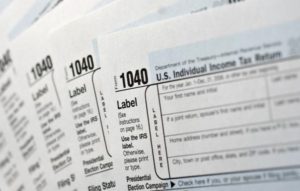 The figures have been tallied. The documents have been gathered and shipped off to the accountant. After weeks of procrastination, then more weeks of aggravation sifting through records, receipts and OMG ALL THOSE NUMBERS, I’ve survived another tax season.
The figures have been tallied. The documents have been gathered and shipped off to the accountant. After weeks of procrastination, then more weeks of aggravation sifting through records, receipts and OMG ALL THOSE NUMBERS, I’ve survived another tax season.
Doing taxes is painful and complicated, especially for freelancers. Traditionally employed people usually have only one source of income; freelancers have many. They get a simple W2 form; we get 1099s reporting how much each client paid us last year. But the grueling process also brings some rewards. No, I’m not talking about a refund check. That refund is a bad thing. It means I lent my money to the government at no interest. The reward is the information I’ve gathered, which I can now use to protect and improve my freelance business. Specifically, if I study those 1099s rather than quickly filing them away with a sigh of relief, I can assess the security of current income, spot and avoid potential drops in future income, and improve the amount I’m paid per hour of work.
How many? The number of 1099s I receive shows the diversification of my income. If I got only one, I’m in trouble. In fact, I’d be better off as a full-time employee of that company. At least then I’d get benefits like sick days and paid vacations. Generally, the more 1099s I receive, the more financially secure I am. Less than five is dangerous. I try to maintain at least 10 clients each year.
How much on each 1099? These forms show exactly how much of my income is from each client. I do a little math to figure out what percent of my total income each client represents. How balanced is the distribution? Does one client dominate? If so, that’s a sign I need to diversify. What would happen if that client suddenly went away? I know, because I lived through a year in which 40 percent of my income disappeared with one client. It was not fun. Today, I try to balance out my work so that no more than 15 percent of my income comes from any one client.
How reliable is each client? As long as I’m looking at my revenue in such detail, I take a minute to assess the financial health and stability of each client. During the course of the year, I may be so busy with work that I don’t see signs that a client’s business is changing. A little googling can tell me a lot. Are its revenues strong or is it struggling? Is it growing? Has it been acquired by a competitor? This year I realized that some 30 percent of my income was at risk because several clients were sold in late 2015 and others were being shopped around publicly. One of the first things a new owner typically does is cut spending. The freelance budget is an easy target.
How profitable is each client? I track the number of hours worked per client. At tax time, I divide the total on each 1099 by the number of hours worked. Regardless of how they pay me – per word, per project or per hour – this simple math gives me a figure that represents my real income per hour. I’m always amazed at how wide the range is between the lowest and highest real hourly income per client. Sometimes, I discover that a client that I valued for its high fee actually takes so much time that its hourly income rate is quite low. Money isn’t the only reason to work with a particular client, but knowing the real income rate tells me how much money I may be giving up in order to do so. I list all my clients by real income per hour rate, from highest to lowest, then draw a line where I want my hourly rate to be this year. I keep the list posted on the wall above my desk, so when a client proposes a new project I know the income it’s likely to produce. That knowledge gives me the confidence I need to ask for an increase or decline the work. If I do this consistently, I essentially give myself a raise each year.
Using the information that comes from filing taxes lessens the pain of writing that check. If I didn’t have to deal with all those forms and numbers, I might never know how important it is to diversify my sources of income, which clients are likely to disappear or how little I actually earn for some work. It’s my annual business checkup. Thanks, Uncle Sam.
